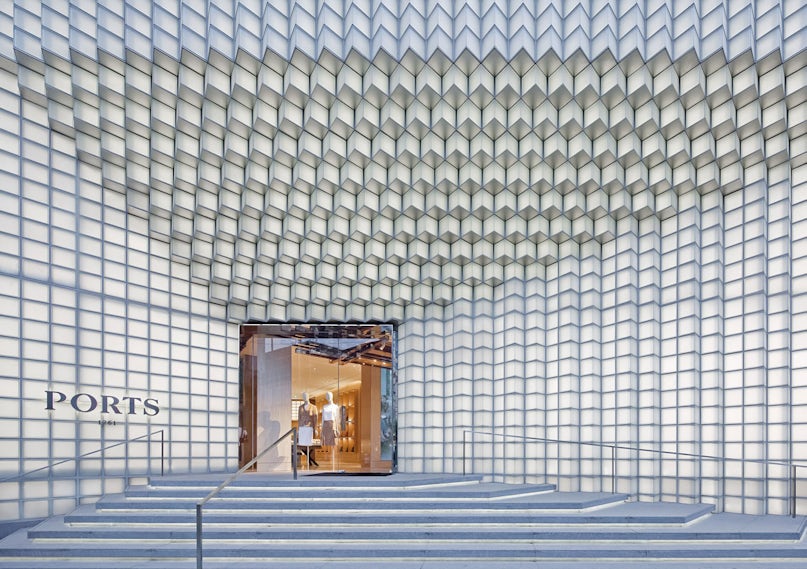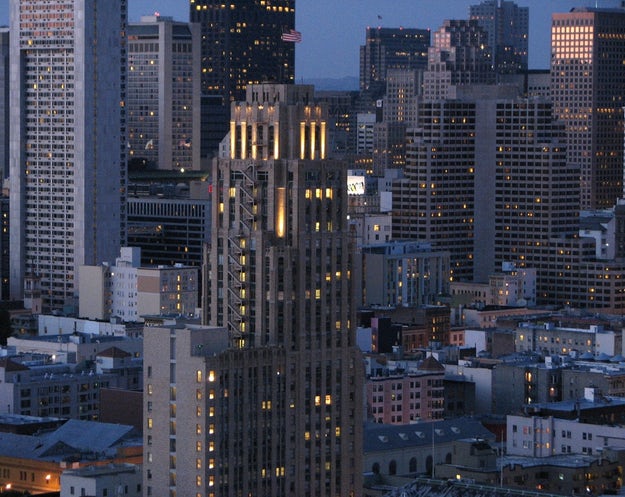Architects: Want to have your project featured? Showcase your work by uploading projects to Architizer and sign up for our inspirational newsletters.
Unfortunately, for many people, just the mention of glass block is enough to send shudders down their spine. It often brings back memories of a time when popcorn ceilings and shag carpeted bathrooms were all the rage. Recently, however, this much-maligned material has been making a comeback, as innovations in the manufacturing and installation of glass blocks have made them more versatile than ever before. So, before passing judgement, check out these six stunning designs that will have you rethinking your stance on specifying glass block:

© UUfie

© UUfie

© UUfie
Ports 1961 Shanghai by UUfie, Shanghai, China
Lighting by Inverse Lighting Ltd.
Utilizing the edges and corners of glass blocks, UUfie has created a sculptural storefront out of a traditionally planar material. Two types of glass blocks were used to create the 3D façade — a standard 12-inch square block and a custom-mitred corner block. The blocks are satin finished and supported by shot-blasted stainless steel plates. They are illuminated internally by white LEDs by Inverse Lighting Ltd.

© Vo Trong Nghia Architects

© Vo Trong Nghia Architects
Nanoco Head Office by Vo Trong Nghia Architects, Ho Chi Minh City, Vietnam
Planned for construction in the Vietnamese capital, Vo Trong Nghia Architects’ vision for the new Nanoco headquarters and showroom is a tower of glass blocks and planted terraces. The blocks, which transmit less heat than conventional glazing, will help keep the building cool during the day and will be illuminated by Nanoco’s lighting products at night. “The glass blocks are meant to blur and calm the view to the outside, while the trees provide green ambience throughout the building,” according to the architects.

© Ks Architects HIROAKI KIMURA & ASSOCIATES

© Ks Architects HIROAKI KIMURA & ASSOCIATES
Kobe Shinsei Baptist Church by Ks Architects Hiroaki Kimura & Associates, Kobe, Japan
The gable ends of this chapel are infilled with high-purity glass blocks from Italy. At the front, a wall of clear blocks with a built-in double door create a welcoming entrance. Behind the altar, translucent blocks give the space an ethereal glow.

© Brisac Gonzalez Architects

© Brisac Gonzalez Architects

© Brisac Gonzalez Architects
Le Prisme Concert Hall by Brisac Gonzalez Architects, Aurillac, France
25,000 glass blocks protrude from the concrete façade of Le Prisme, a concert venue in France. These pyramid-shaped blocks sparkle like diamonds in the daylight. At night, they are backlit by LEDs to produce prismatic light shows.

© Roland Halbe

© Moneo Brock
Thermal Baths “Termas de Tiberio” by Moneo Brock Studio, Panticosa, Spain
Glass Blocks by Seves
The Baths at Panticosa are enclosed in “ribbons” of frosted glass blocks, set against a backdrop of snow-covered mountains. The blocks are trapezoidal in profile, giving them a shingle-like appearance which emphasizes the building’s curves. You can read more about how Seves’ bespoke glass blocks were forged for this incredible project here.

© Daria Scagliola/Stijn Brakkee

© Daria Scagliola/Stijn Brakkee

© MVRDV
Crystal Houses by MVRDV, Amsterdam, Netherlands
Glass bricks developed in collaboration with Delft University of Technology and ABT
UV Bonded Adhesives by Delo Industrial Adhesives
To help Chanel’s Amsterdam flagship store blend in with its traditional neighbors, MVRDV developed a new type of glass block: the glass brick. Unlike typical glass blocks, which are hollow and non-structural, these bricks are solid and bonded with industrial adhesive, making them “stronger than concrete.” The resulting façade, a dissolving wall of glass and terracotta, combines classic Dutch masonry with cutting-edge technology. You can read more about how this unique, crystalline façade was constructed here.
Architects: Want to have your project featured? Showcase your work by uploading projects to Architizer and sign up for our inspirational newsletters.




